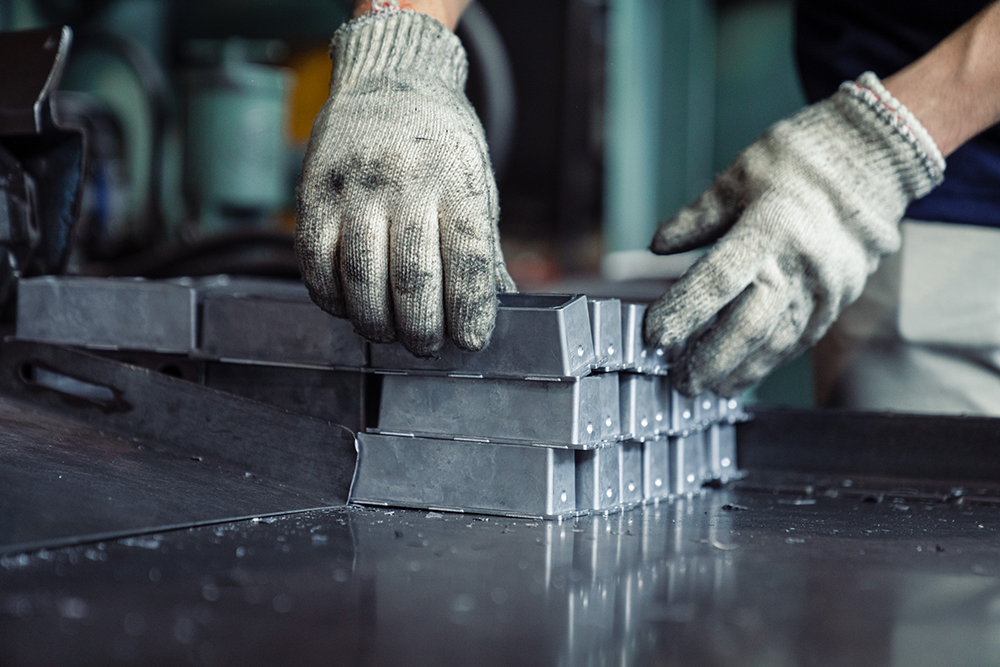High Vacuum Die Casting's Impact on Modern Manufacturing
In the realm of high-pressure die casting, high vacuum die casting technology has taken precision to unprecedented heights. Operating in a vacuum environment minimizes the presence of gases, especially oxygen, significantly reducing the likelihood of gas porosity and defects. This fundamental principle elevates material quality, making it particularly advantageous for industries requiring complex structural components.
How Vacuum Die Casting Produces Flawless Parts
In traditional die-casting processes, molten metal is injected into molds under high pressure. During the cooling and solidification process, oxygen in the air dissolves into the metal, forming gas porosity. These gas pores diminish material strength, and toughness, and affect the appearance of the parts.
In high vacuum die casting, both the mold and molten metal are placed in a vacuum environment. With low air content in a vacuum, the possibility of gas dissolving into the metal significantly decreases, thus reducing the formation of gas pores.
Unlock New Design Possibilities for Various Industries
High Vacuum Die Casting (HVDC) surpasses the limits of traditional High-Pressure Die Casting (HPDC). Its exceptional dimensional accuracy allows manufacturers to produce complex components with unparalleled precision. This opens doors to advancements in various industries, including:
Automotive: Producing intricate engine parts and advanced safety features for the next generation of automobiles.
Aerospace: Manufacturing lighter and stronger aircraft components to enhance fuel efficiency and performance.
Medical Equipment: Manufacturing precision medical instruments to improve reliability and accuracy.
In the automotive industry, for instance, high vacuum die casting can be employed for manufacturing chassis safety components, gearbox beams, and front suspension brackets. This not only enhances the strength and toughness of the components but also improves the safety and fuel efficiency of vehicles.
Material Innovation: The Future of Aluminum Die Casting
Traditional aluminum die-casting alloys like ADC12 possess good fluidity and castability, but they lack the strength and toughness required for automotive components. High vacuum die-casting technology addresses this issue by utilizing high-strength and tough die-casting aluminum alloys.
High-strength and tough die-casting aluminum alloys are novel alloys with exceptional strength and toughness. Some common ones include:
Silafont®-36: An Al-Si-Mg-Cu alloy with excellent strength, toughness, and corrosion resistance.
Magsimal®-59: An Al-Mg-Si alloy with high strength, toughness, and good heat treatment performance.
Aural-2: An Al-Si-Mg alloy with high strength, toughness, and good wear resistance.
High vacuum die casting effectively enhances the performance of high-strength and tough die-casting aluminum alloys. For example, under high vacuum die casting, Silafont®-36 achieves a tensile strength of 200 MPa, yield strength of 150 MPa, and elongation of 10%.
A Sustainable Solution for the Future
High vacuum die casting improves material utilization and reduces energy consumption by minimizing gas porosity and defects. For instance, it can reduce the gas porosity rate to 0.2%, enhancing material strength and toughness while reducing material waste.
Furthermore, high vacuum die casting optimizes production processes, reducing energy consumption. For example, it improves the utilization of molten metal, decreasing energy consumption during the melting process.
Conclusion
High vacuum die-casting technology stands out as an advanced die-casting technique with remarkable advantages. In the automotive components sector, it effectively enhances the toughness of parts, meeting the demands for lightweight and performance improvement. Additionally, high vacuum die casting technology offers energy efficiency and waste reduction benefits, aligning with modern manufacturing trends.
In the future, high vacuum die casting technology is poised to find broader applications in the automotive components sector, driving the development of the automotive industry. The adoption of this technology not only improves manufacturing efficiency but also provides manufacturers with greater design flexibility and innovation space.
As a forward-thinking manufacturing service provider, Teamsworld is dedicated to embracing cutting-edge technologies meeting customer demands, and exploring broader applications. High vacuum die casting represents a pinnacle in high-pressure die casting, offering unparalleled precision, material innovation, and sustainability. Contact Teamsworld today to discover how we can leverage various die-casting solutions to elevate your manufacturing processes.


